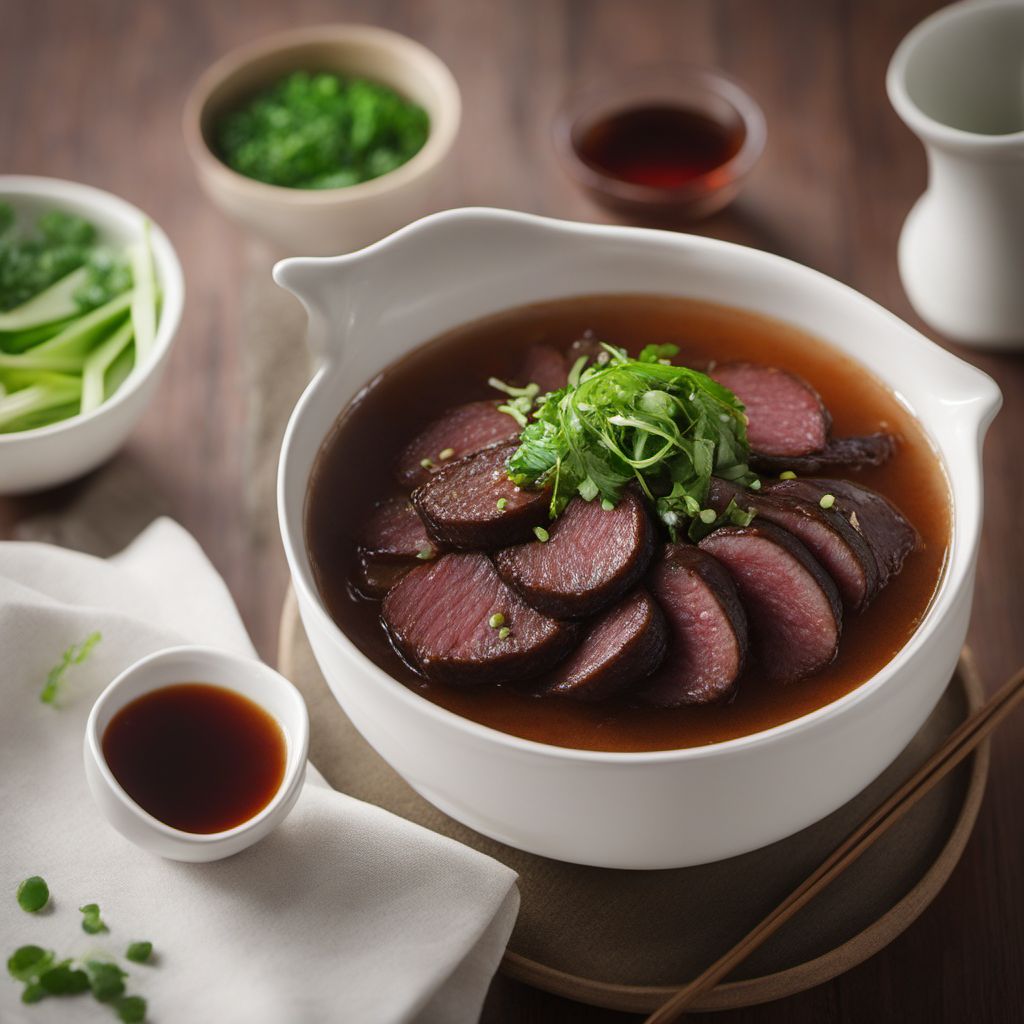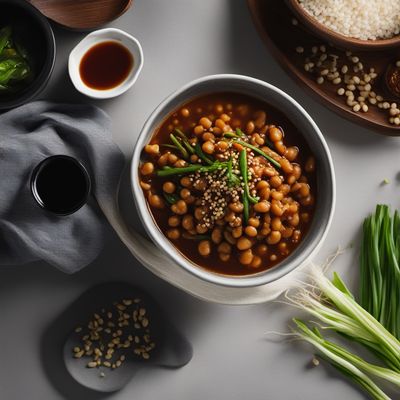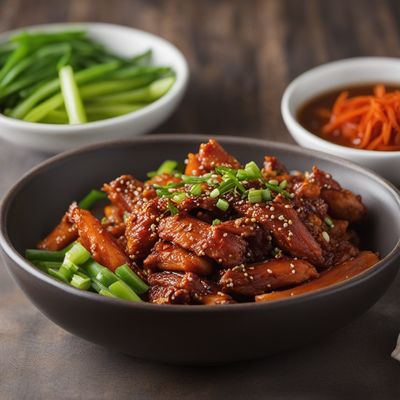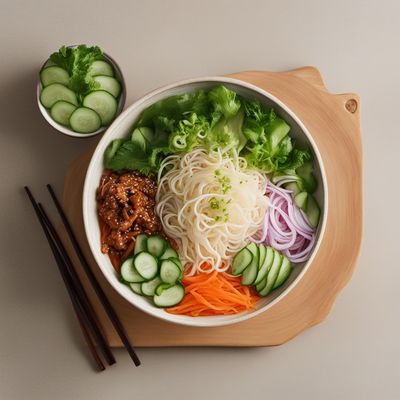
Recipe
Sundaeguk - Traditional Korean Blood Sausage Soup
Hearty Delight: Savor the Richness of Traditional Korean Blood Sausage Soup
4.0 out of 5
Indulge in the flavors of Korean cuisine with Sundaeguk, a traditional blood sausage soup. This comforting dish is a staple in Korean households and is known for its robust flavors and nourishing qualities.
Metadata
Preparation time
20 minutes
Cooking time
20 minutes
Total time
40 minutes
Yields
4 servings
Preparation difficulty
Easy
Suitable for
Gluten-free, Dairy-free, Low-carb, High-protein, Paleo-friendly
Allergens
Pork, Wheat (in the sundae casing)
Not suitable for
Vegetarian, Vegan, Kosher, Halal, Nut-free
Ingredients
-
500g (1.1 lb) sundae (Korean blood sausage) 500g (1.1 lb) sundae (Korean blood sausage)
-
1 onion, sliced 1 onion, sliced
-
4 cloves of garlic, minced 4 cloves of garlic, minced
-
1 small Korean radish, peeled and sliced 1 small Korean radish, peeled and sliced
-
4 cups (950ml) beef broth 4 cups (950ml) beef broth
-
2 cups (470ml) water 2 cups (470ml) water
-
200g (7 oz) glass noodles 200g (7 oz) glass noodles
-
1 tablespoon soy sauce 1 tablespoon soy sauce
-
1 teaspoon gochugaru (Korean red pepper flakes) 1 teaspoon gochugaru (Korean red pepper flakes)
-
Salt and pepper to taste Salt and pepper to taste
-
Chopped green onions, for garnish Chopped green onions, for garnish
Nutrition
- Calories (kcal / KJ): 350 kcal / 1465 KJ
- Fat (total, saturated): 15g, 5g
- Carbohydrates (total, sugars): 30g, 3g
- Protein: 25g
- Fiber: 2g
- Salt: 2g
Preparation
-
1.Rinse the sundae under cold water to remove any excess blood. Slice the sundae into bite-sized pieces.
-
2.In a large pot, sauté the sliced onion and minced garlic until fragrant.
-
3.Add the sliced Korean radish to the pot and cook for a few minutes until slightly softened.
-
4.Pour in the beef broth and water, and bring to a boil.
-
5.Add the sliced sundae to the pot and simmer for 10 minutes.
-
6.Meanwhile, cook the glass noodles according to the package instructions. Drain and set aside.
-
7.Season the soup with soy sauce, gochugaru, salt, and pepper. Adjust the seasoning to your taste.
-
8.Add the cooked glass noodles to the pot and simmer for an additional 5 minutes.
-
9.Serve the Sundaeguk hot, garnished with chopped green onions.
Treat your ingredients with care...
- Sundae — Make sure to rinse the sundae thoroughly under cold water to remove any excess blood before slicing it.
- Korean radish — Peel the radish before slicing it to ensure a clean and crisp texture in the soup.
- Glass noodles — Cook the glass noodles separately and add them to the soup just before serving to prevent them from becoming too soft.
Tips & Tricks
- If you prefer a spicier soup, increase the amount of gochugaru according to your taste.
- Feel free to add other vegetables such as mushrooms or spinach to enhance the nutritional value of the soup.
- Serve the Sundaeguk with a side of steamed rice for a complete and satisfying meal.
- Leftovers can be stored in the refrigerator for up to 3 days. The flavors will continue to develop, making it even more delicious the next day.
- For a heartier version, you can add sliced beef or pork to the soup while simmering.
Serving advice
Sundaeguk is traditionally served as a main course. It can be enjoyed on its own or with a side of steamed rice. Serve the soup piping hot to fully appreciate its flavors and warmth.
Presentation advice
When serving Sundaeguk, ladle the soup into individual bowls and garnish with a sprinkle of chopped green onions. The vibrant green color adds a pop of freshness to the dish. Pair it with a bowl of steamed rice and enjoy the comforting flavors of this traditional Korean soup.
More recipes...
More Korean cuisine dishes » Browse all

Chapssaltteok
Chapssaltteok is a Korean dessert made from glutinous rice flour and sweet red bean paste.

Honghap tang
Spicy seafood soup
Honghap tang is a traditional Korean soup that is made with mussels and vegetables. The soup is known for its rich and savory flavor, and is...

Dak Galbi
Dak Galbi is a Korean dish that is made with marinated chicken, vegetables, and spicy sauce. It is a popular dish in Korea and is often served in...





